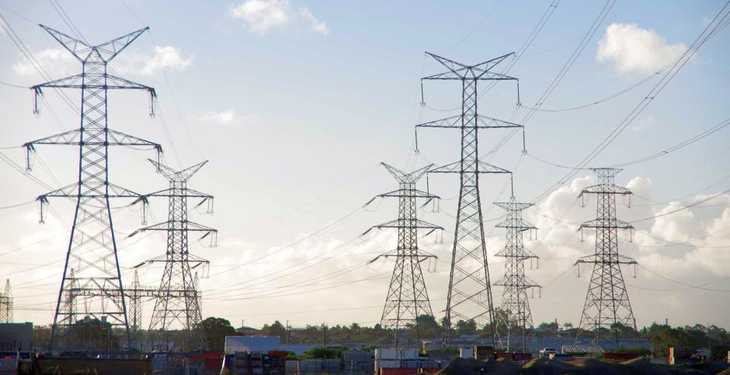With its abundance of mineral wealth and sun-kissed shores, Australia takes pride in thinking of itself as the “lucky country.” That sounds good until you consider the full quote from which the phrase is derived — a warning that this natural endowment was being squandered by the second-rate way the nation is governed.
Politics lies at the heart of Australia’s current energy paradox: How can one of the world’s largest exporters be having trouble keeping its lights on, asks David Fickling for Bloomberg Gadfly.
Clearing Out
The National Electricity Market, whose grid covers almost 90 percent of the population, has had a turbulent six months. South Australia is planning to break away following a series of outages, including one last September that blacked out the state for more than seven hours.
Wholesale electricity prices in Victoria have more than doubled since Nov. 3, when Engie SA announced plans to close its 1.6-gigawatt coal-fired Hazelwood power station. More shocks will follow: About 3.6 GW of coal generation capacity is scheduled for closure at present, rising to 7 GW by 2030 according to Bloomberg New Energy Finance.
Dirty Dozen
Such changes shouldn’t cause this degree of difficulty. The U.S. has shut about 39 GW of coal-fired capacity since the end of 2012 without significant upsets, while the U.K. closed about 8.4 GW in the five years through 2015. Australia ought to be able to handle 1.6 GW dropping off the grid.
Part of the explanation is different trade dynamics. Thanks to its greater exposure to global export markets, gas in Australia has failed to undercut coal on price in the way it has in the U.S. and U.K.
Indeed, the country’s LNG plants are so hungry for volumes that they’ve been in direct competition with local generators. Since the closure of Hazelwood was announced, domestic gas prices have reset to match the regional spot LNG market.
Liquid Market
Rising fuel costs have been so damaging for the economics of gas-fired electricity that the Australian Energy Market Operator expects such generation to decline by about 15 percent between 2016 and 2021.
Where coal is being replaced, it’s with renewables. Almost 70 percent of the additional planned capacity in the national electricity market is for wind-power plants, with a further 13 percent going to utility-scale solar.
It’s worth recognizing that this is good news. Faster withdrawal from fossil fuels is clearly better for the global climate, and the volume of wind and solar set to hit the market means there’s little risk of outright shortages over the next five years or so.
Thanks to the uptake of small-scale domestic solar and battery systems, total demand in the National Electricity Market is unlikely to grow in the foreseeable future, according to Bloomberg New Energy Finance.
Sparks Fly
As a result, many of the electricity market’s problems are likely to solve themselves. The withdrawal of Hazelwood’s low-cost supply will improve the economics of less emissions-intensive black-coal stations in New South Wales, as well as gas-fired plants that are currently mothballed. Rising prices may be mitigated by the growing share of lower-cost renewables. One challenge remains. If coal-power retirements accelerate, solar and wind will be unable to fill the gap quickly enough, especially given the way their variability can undermine the stability of the grid. The government’s plans to add 2 GW of hydroelectric capacity in the mountains southwest of Canberra will help, as will battery-storage proposals like the one Tesla Chief Executive Officer Elon Musk has offered for South Australia. They won’t make the problem go away altogether. Gas-fired power is the simplest off-the-shelf solution. Unfortunately, the financial challenges are substantial. For one thing, most onshore wind and utility-scale solar is already lower-cost, a situation that’s likely to be exacerbated as renewable prices decline further. For another, Australia’s heavy exposure to the emerging global gas market makes forecasting fuel costs a guessing game. And finally, the policy certainty that might tempt players to enter is entirely lacking.
As Gadfly argued in the first part of this series, the governments of major energy exporters are in an impossible situation, splitting the baby between energy companies that want high prices, and domestic consumers who want low ones. The result in Australia has been a policy chasm: the opposition Labor party wants renewables to supply half the country’s energy by 2030, while former prime minister Tony Abbott argues that “coal is good for humanity.”
How to cut that Gordian knot? One solution proffered by Catherine Tanna, managing director of generator and retailer EnergyAustralia Pty, would be to establish something akin to an independent central bank to set energy policy decades ahead . It’s a smart idea, but determining the terms under which such a body would operate would no doubt spark an even more brutal debate.
No wonder the government has punted the issue to be sorted out in a flurry of inquiries and reviews. Australia’s wrangling over coal mining and climate change has contributed to a turnover of five prime ministers in seven years. The incumbent, Malcolm Turnbull, is in no hurry to add to that total. While resources can be a blessing, they can also become a curse.
